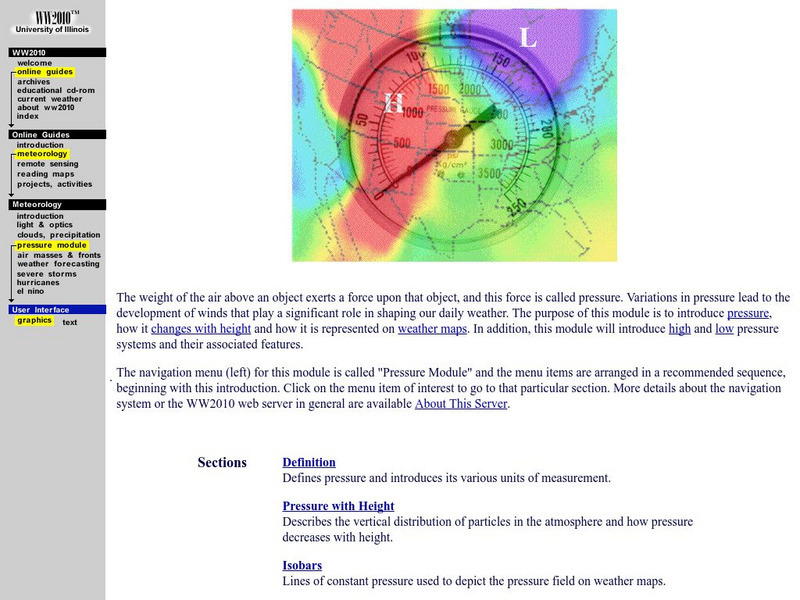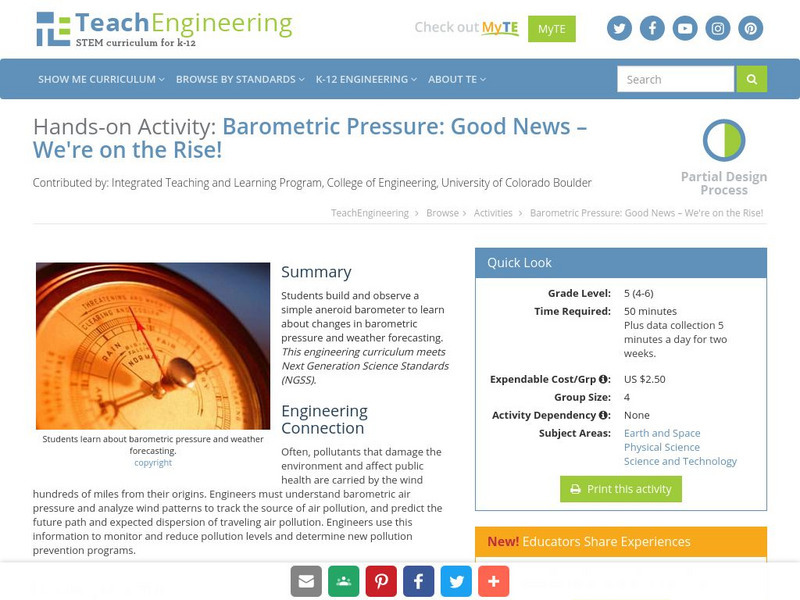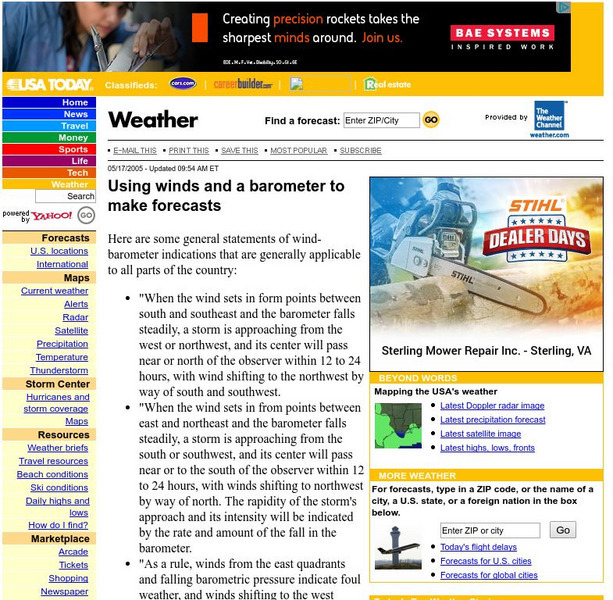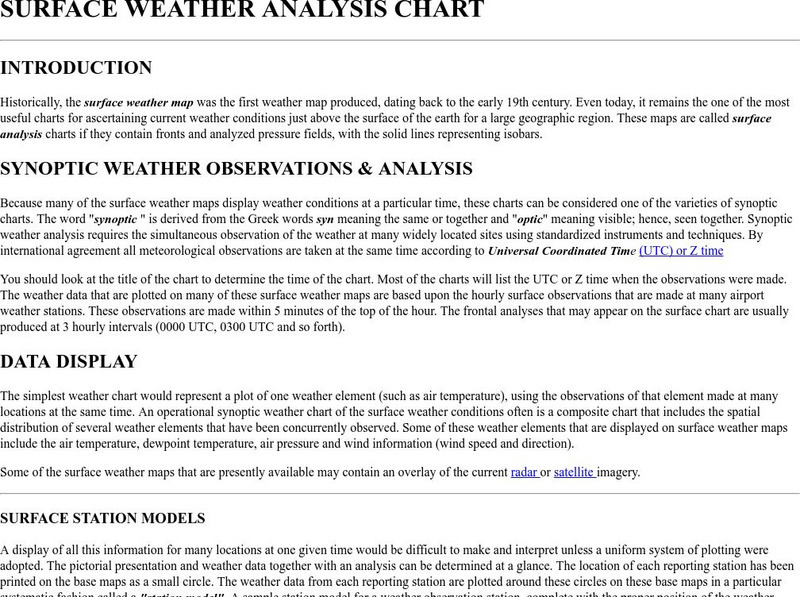Utah Education Network
Uen: Trb 4:2 Investigation 4 Air Pressure & Barometers
Activity helps students gain an understanding of barometric pressure.
Science Struck
Science Struck: Interpreting Barometric Pressure Readings
Explains how to read a barometer and interpret its meaning, as well as how the barometer was invented.
University of Illinois
University of Illinois Extension: Ww2010: Atmospheric Pressure
This site from the University of Illinois describes what air pressure is and how it is measured. Explains high and low pressure areas, isobars, and how pressure changes with height.
Concord Consortium
Concord Consortium: Molecular Workbench: Barometric Formula
Adjust the altitude and temperature in this simulation to observe how gas pressure is affected by these changes.
Science Education Resource Center at Carleton College
Serc: High and Low Pressure
Students will experience a hands on reference for high and low pressure as it relates to air movement. This activity will help with understanding high and low pressure behavior.
Science Education Resource Center at Carleton College
Serc: Exploring Atmospheric Pressure by Making a Barometer
Students create their own barometer, calibrate it with the actual air pressure data, and compare that data with the boiling temperature of their water. They learn from this that atmospheric pressure affects the boiling points of liquid....
USA Today
Usa Today: How a Low Pressure System Affects Weather
Discusses the fronts and weather patterns associated with low pressure areas.
Other
Baranidesign: Air Density Calculator
A calculator that computes air density if altitude, temperature, humidity, and barometric pressure are known.
TeachEngineering
Teach Engineering: Good News We're on the Rise!
Students build and observe a simple aneroid barometer to learn about changes in barometric pressure and weather forecasting.
USA Today
Usa Today Weather: Using Winds and a Barometer to Make Forecasts
Describes the ways in which wind direction and barometric pressure can be used by the amateur weather forecaster to make predictions about the weather.
CK-12 Foundation
Ck 12: Plix Series: Factors on Gas Pressure: Atmospheric Pressure
[Free Registration/Login Required] Observe what happens to the barometer as the weather changes from clear, to mixed, to overcast. Then answer a challenge question about the topic.
TED Talks
Ted: Ted Ed: The History of the Barometer (And How It Works)
A barometer is an instrument that measures air pressure, allowing weather forecasters and scientists to better predict extreme weather events. Despite its incredible usefulness, inventing the barometer was no walk in the park. Asaf...
TeachEngineering
Teach Engineering: Weather Watchers
Students are introduced to some essential meteorology concepts so they more fully understand the impact of meteorological activity on air pollution control and prevention. First, they develop an understanding of the magnitude and...
The Franklin Institute
Franklin Institute Online: Make Your Own Barometer
At this site from the Franklin Institute Online, you are given instructions how to make a simple barometer as part of an activity in which you make a weather station for observation.
University of Wisconsin
Atmospheric and Oceanic Sciences: Surface Weather Analysis
Explains the use of synoptic weather analysis in preparing weather maps and forecasting. Discusses the use of symbols as well.
CK-12 Foundation
Ck 12: Plix Series: Gas Mixture and Molecular Speeds
[Free Registration/Login Required] Hike to the top of Mt. Everest and observe what happens to the amount of molecules pushing down on the surface of the Earth. After the activity, answer one challenge question about the topic.












